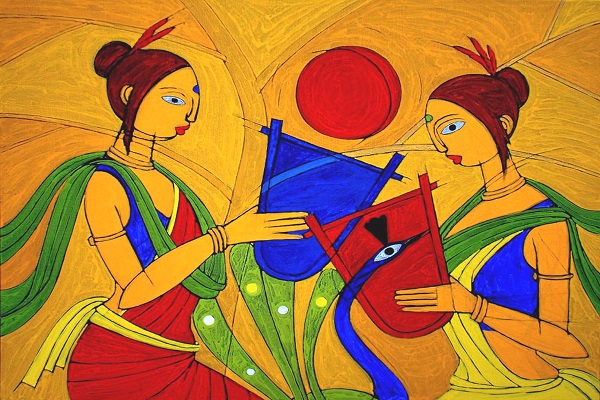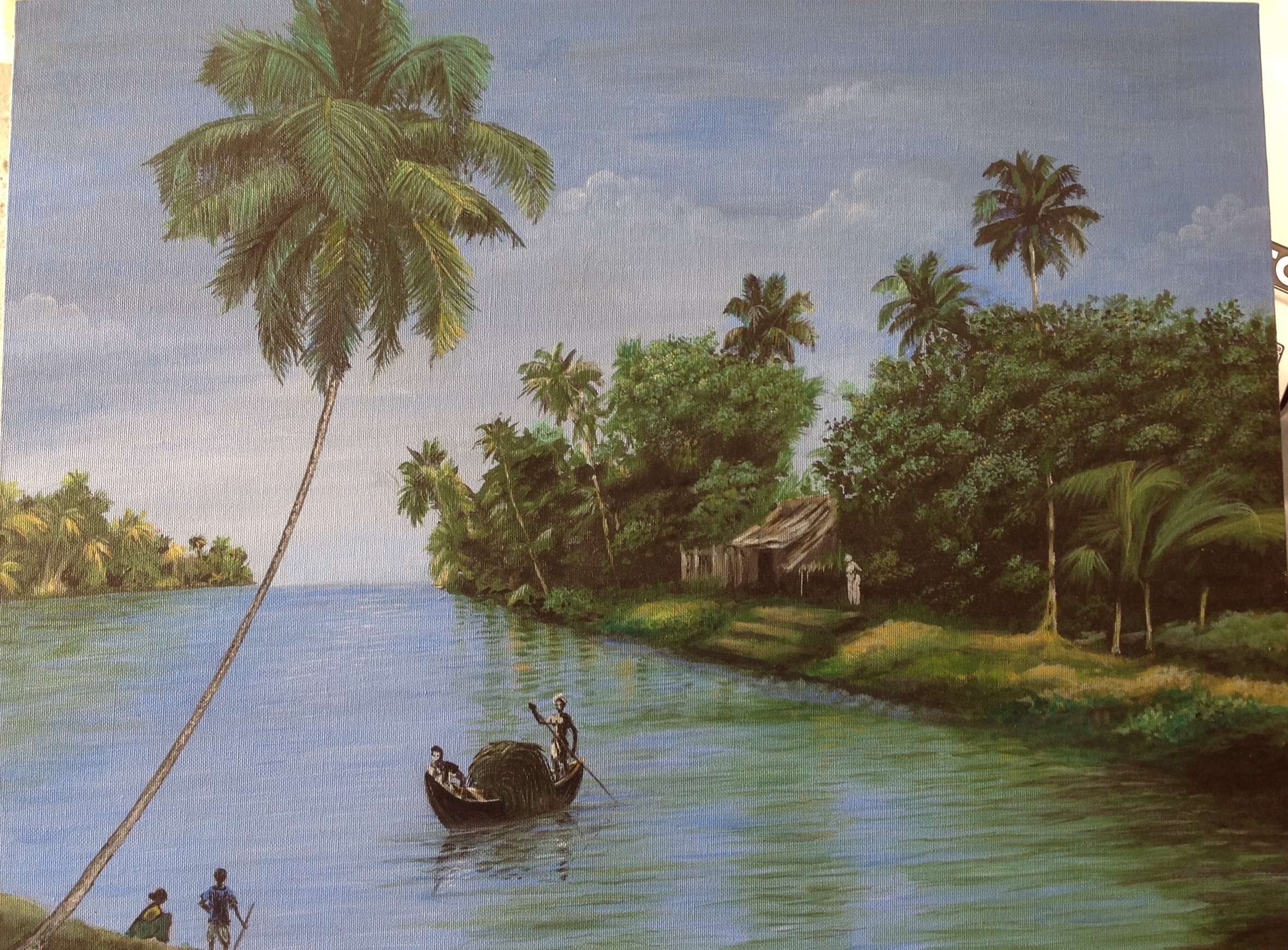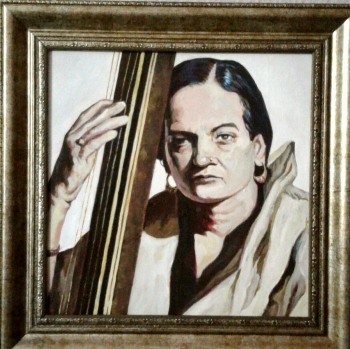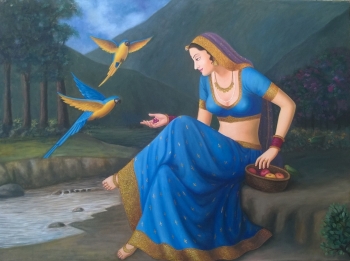
India has a long and illustrious history of art that has produced some of the most incredible paintings and artists the world has ever seen. Famous Indian painters have made an immense contribution to the world of art and have left a lasting impact on Indian culture and society.
Through their artistic expressions, they have explored the intricacies of the human experience, celebrated the beauty of nature, and brought to life the stories of myth and legend. They have used their art to express their opinions, provoke thoughts and emotions, and shed light on the social and political issues of their time.
In this blog, we will delve into the artistic contributions of some of the most famous Indian painters, exploring their life, works, and their impact on the world of art. From the grandeur of Raja Ravi Varma's royal portraits to the expressionistic works of M.F. Hussain, we will take you on a journey through the vibrant and diverse world of Indian artwork.
So, get ready to embark on this artistic adventure and discover the beauty and brilliance of Indian art. Read the blog to dwell into the artistic contributions of most famous Indian painters.
Raja Ravi Varma
Raja Ravi Varma was a celebrated Indian painter born in 1848 in the princely state of Travancore, located in present-day Kerala. He was a member of the royal family and was known for his realistic and innovative art style. Raja Ravi Varma's work was a blend of traditional Indian art forms and Western techniques, and his paintings reflected the changing social and cultural landscape of India in the 19th century.
One of Raja Ravi Varma's most significant contributions to Indian art was his use of oil painting, which was a relatively new medium in India at the time. He used oil paints to create lifelike portraits of Indian royalty and everyday people, often incorporating elements of Indian mythology and culture in his works. His art had a profound influence on Indian popular culture and helped to establish a distinct identity for Indian art.
Raja Ravi Varma's legacy is still felt today, and his paintings continue to be popular in India and around the world. He is often credited with bringing Indian art to the masses and creating a bridge between traditional and modern art forms.
Some of Raja Ravi Varma's most notable paintings include his depictions of Indian deities and mythological figures, such as "Shakuntala," "Sita," and "Damayanti." He also painted numerous portraits of Indian royalty, including the Maharajas of Travancore and Baroda. His painting "Hamsa Damayanti" is considered one of his most exceptional works, depicting the love story of King Nala and Damayanti from the Hindu epic Mahabharata.
Raja Ravi Varma's art continues to inspire and influence generations of artists in India and around the world. His legacy has left an indelible mark on Indian art, and his paintings remain a testament to the rich cultural heritage of India.
Amrita Sher-Gil
Amrita Sher-Gil was a pioneering Indian painter born in Budapest in 1913 to a Hungarian mother and Indian father. She spent most of her childhood in Europe, where she developed an early interest in art. Sher-Gil moved to India with her family in 1921 and started formal art training at the age of eight. She later studied in Paris, where she was influenced by the work of the post-impressionists and the Mexican muralists.
Sher-Gil's art was deeply influenced by her Indian heritage and her European education. She is known for her powerful depictions of the Indian people and their lives, often focusing on the struggles of women and peasants. Her paintings are characterized by bold colors, strong lines, and an intense emotional quality.
Amrita Sher-Gil's artistic contributions to Indian art were significant. She was one of the first artists to bridge the gap between traditional Indian art and modern Western techniques, creating a distinct style that was both Indian and international. Her art helped to redefine Indian art, challenging traditional notions of beauty and paving the way for future generations of artists.
Sher-Gil's legacy as a painter has been immense. She is often credited with being one of the most important Indian artists of the 20th century. Her work has influenced generations of Indian artists, and her paintings continue to be celebrated for their emotional depth and artistic innovation.
Some of Amrita Sher-Gil's most notable paintings include "Bride's Toilet," "Two Women," and "South Indian Villagers Going to Market." Her self-portraits, such as "Self-Portrait as Tahitian," are also regarded as some of her most outstanding works. Sher-Gil's paintings have been exhibited in major art galleries around the world, and her contribution to Indian art continues to be celebrated today.
In conclusion, Amrita Sher-Gil's impact on Indian art cannot be overstated. Her art challenged the conventions of her time and helped to shape the future of Indian art. Her legacy as a painter continues to inspire and influence generations of artists, and her paintings remain a testament to the rich cultural heritage of India.
Nandalal Bose
Nandalal Bose was a prominent Indian painter born in 1882 in Bihar, India. He studied art at the Government College of Art and Craft in Kolkata and later at the Ecole des Beaux-Arts in Paris. Bose is known for his role in the Indian independence movement and his contribution to the revival of traditional Indian art.
Bose's artistic contributions to Indian art were significant. He was one of the first artists to reject the academic style of painting that was prevalent in India at the time, and instead, embraced traditional Indian art forms. He was deeply influenced by the Ajanta caves and other ancient Indian art, which he incorporated into his own work. Bose's art was characterized by its simplicity and clarity of form, and his use of color was highly expressive.
Nandalal Bose's legacy as a painter and educator has been immense. He was instrumental in the establishment of the Santiniketan school of art, which was founded by Rabindranath Tagore. Bose was also a member of the Indian National Congress and used his art to promote the Indian independence movement. He designed the Indian National Flag and several other symbols of Indian nationalism.
Some of Nandalal Bose's most notable paintings include his depictions of rural life in India, such as "Fisherwoman," "The Rickshaw Puller," and "Harvesting Paddy." He also painted several portraits of Indian leaders, including Mahatma Gandhi and Jawaharlal Nehru.
In conclusion, Nandalal Bose's contribution to Indian art and culture cannot be overstated. He played a vital role in the revival of traditional Indian art and was a key figure in the Indian independence movement. His legacy as a painter and educator continues to inspire and influence generations of artists in India and around the world.
MF Husain
Maqbool Fida Husain, better known as MF Husain, was a prominent Indian painter born in 1915 in Pandharpur, Maharashtra. Husain was entirely self-taught and started his career as a billboard painter in Mumbai. He went on to become one of the most famous and controversial Indian artists of the 20th century.
Husain's artistic contributions to Indian artwork were significant. He was a prolific painter and is known for his dynamic, colorful, and often provocative depictions of Indian culture and society. His paintings were characterized by their bold lines, vibrant colors, and a fusion of traditional and modern Indian elements. Husain's work often addressed themes related to social justice, politics, and religion.
Husain's legacy as a painter has been immense. He is often regarded as the most influential and celebrated Indian artist of his generation. His art inspired a new generation of Indian artists, and his paintings continue to be celebrated for their unique style and artistic innovation.
Some of MF Husain's most notable paintings include "Battle of Ganga and Jamuna: Mahabharata 12," "Horses," and "Mother Teresa." His series of paintings on the Indian epics, Ramayana and Mahabharata, are some of his most iconic works. Husain's paintings have been exhibited in major art galleries around the world, and his contribution to Indian art continues to be celebrated today.
In conclusion, MF Husain's contribution to Indian art cannot be overstated. His work challenged the conventions of his time and helped to shape the future of Indian art. His legacy as a painter continues to inspire and influence generations of artists, and his paintings remain a testament to the richness and diversity of Indian culture.
Conclusion
In conclusion, the artistic contributions of some of the most famous painters of India have been immense and have helped shape the artistic landscape of India. Raja Ravi Varma, known for his depiction of Hindu mythological figures, introduced realism into Indian art and laid the foundation for modern Indian art. Amrita Sher-Gil's powerful paintings of Indian women, captured the struggles and beauty of Indian women and their lives. Nandalal Bose, on the other hand, brought back traditional Indian art forms and fused it with Western techniques, creating a unique style of art. MF Husain, with his provocative and bold paintings, challenged the conventions of his time and inspired a new generation of Indian artists.
The lasting impact of these painters can be seen in the continued celebration of their work in India and around the world. Their paintings have inspired and influenced generations of artists and continue to be celebrated for their artistic innovation and unique style. Their art reflects the richness and diversity of Indian culture and has helped to define the Indian artistic identity.
If you are looking for unique Indian artwork that reflects the beauty and complexity of Indian culture, then check out IndianArtIdeas.in. Our online gallery features a wide range of Indian art, including contemporary and traditional works, by some of the most talented Indian artists. With a diverse collection of paintings, sculptures, and prints, IndianArtIdeas.in is your one-stop-shop for all your Indian art needs.





















